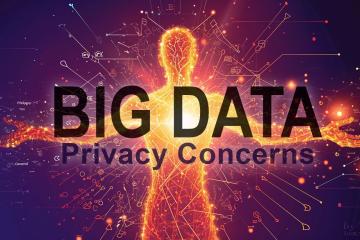Access controls are security measures that regulate who or what can view, use, or modify resources within a computing environment.
In cybersecurity, access controls are critical for protecting data confidentiality, integrity, and availability by limiting access to authorized users and preventing unauthorized activity. Appropriate access controls mitigate the risk of data breaches, data leaks, malware infections, and misuse of systems.
Key Concepts
Definition
Access controls are policies, procedures, and technologies that determine how users and systems are granted access to physical locations, data, and other computing resources based on predefined rules. The primary access control types are:
- Physical - Physical barriers like locks, badges, guards to control entry to facilities.
- Technical - Logical controls enforced by computing systems, such as authentication, authorization, encryption.
- Administrative - Policies, procedures that guide appropriate access like separation of duties, personnel clearance levels.
Access controls use methods like identification, authentication, and authorization to allow or restrict resource access. These work together to enforce the principle of least privilege.
Purpose
The main purposes of access controls are:
- Protect confidentiality by restricting unauthorized viewing of sensitive data.
- Uphold integrity by limiting improper modification of critical data.
- Maintain availability by preventing denial of service attacks.
- Meet legal, regulatory, and policy compliance requirements for access restrictions.
- Reduce risk of damage from human errors or malicious actions.
- Provide accountability by linking access to individual identities.
Relevance
While applicable across IT environments, access controls are especially relevant for:
- Public sector agencies and contractors handling sensitive government data.
- Heavily regulated industries like healthcare and finance.
- Organizations with intellectual property, trade secrets, or competitive data needing protection.
- Businesses processing large volumes of personally identifiable information.
- Multi-tenant cloud environments needing customer data isolation.
Also Known as:
- Access management
- Logical access control
- Identity and access management (IAM)
- Authentication, authorization, and accounting (AAA)
Components/Types
There are three primary categories of access control:
Physical Access Controls
Physical barriers regulating access to computing facilities like:
- Locked server room doors, locating servers in non-public areas
- ID badge requirements for facility entry
- Mantraps, airlocks, and other lobby structures
- Video surveillance systems, security guards
- Biometric systems like fingerprint or retina scanners
Technical Access Controls
Logical controls enforced through computing systems, including:
Authentication - Verifying identity through passwords, smart cards, biometrics.
Authorization - Defining and enforcing what actions users can perform after authentication.
Access approval - Manual access requests and authorization by approvers.
Network access control - Firewalls, VLANs, proxies, VPNs regulating network connectivity.
Encryption - Encoding data so only authorized parties can read it.
Monitoring and logging - Auditing access attempts and activity.
Administrative Access Controls
Management policies and protocols like:
- Allowed use policies
- Separation of duties
- Job rotation
- Personnel clearance levels
- Physical site access procedures
- New user provisioning/deprovisioning processes
- Visitor entry/exit protocols
Importance in Cybersecurity
Access controls are vital for security and risk management:
Security Risks
- Data theft or leaks by unauthorized insiders or external attackers
- Malware or ransomware installations on systems
- Fraud, espionage, or sabotage by infiltrators
- Unintentional data corruption or destruction
- Denial of service disruptions
Mitigation Strategies
- Least privilege model for minimizing unnecessary access
- Strict user provisioning procedures
- Multifactor authentication for critical systems
- Role-based access controls aligned to personas
- Network segmentation through VLANs and ACLs
- Automated access request ticket workflows
- System auditing and access logs analysis
Best Practices
- Identify critical assets, data, and capabilities. Focus stronger controls on these.
- Implement defense-in-depth with layered physical, technical, and administrative controls.
- Use role-based access control model to simplify authorizations.
- Enforce strong password policies and multifactor authentication where possible.
- Institute a default “deny all” approach, explicitly authorizing exceptions.
- Continuously audit permissions and prompts remove unnecessary access.
- Require all remote access to use VPNs + device compliance checks.
- Integrate identity and access management tools for unified visibility and control.
Related Terms
- Authentication - Verifying user identities through factors like passwords, biometrics.
- Authorization - Policies for what actions can be performed after authentication.
- Accounting - Detailed logs of access attempts, resource usage, and history for auditing.
- SIEM - Security event monitoring tools that analyze access patterns and logs.
Access controls are essential security measures that allow organizations to manage access to computing resources based on business needs and risk tolerance. A layered model encompassing physical, technical, and administrative controls provides defense-in-depth by restricting unauthorized access while enabling legitimate use.
Robust access control policies, user provisioning processes, access reviews, and multifactor authentication balanced with operational needs are key to mitigating cyber risks. Appropriate access controls demonstrate security due diligence and support data protection, integrity, availability, and compliance.


